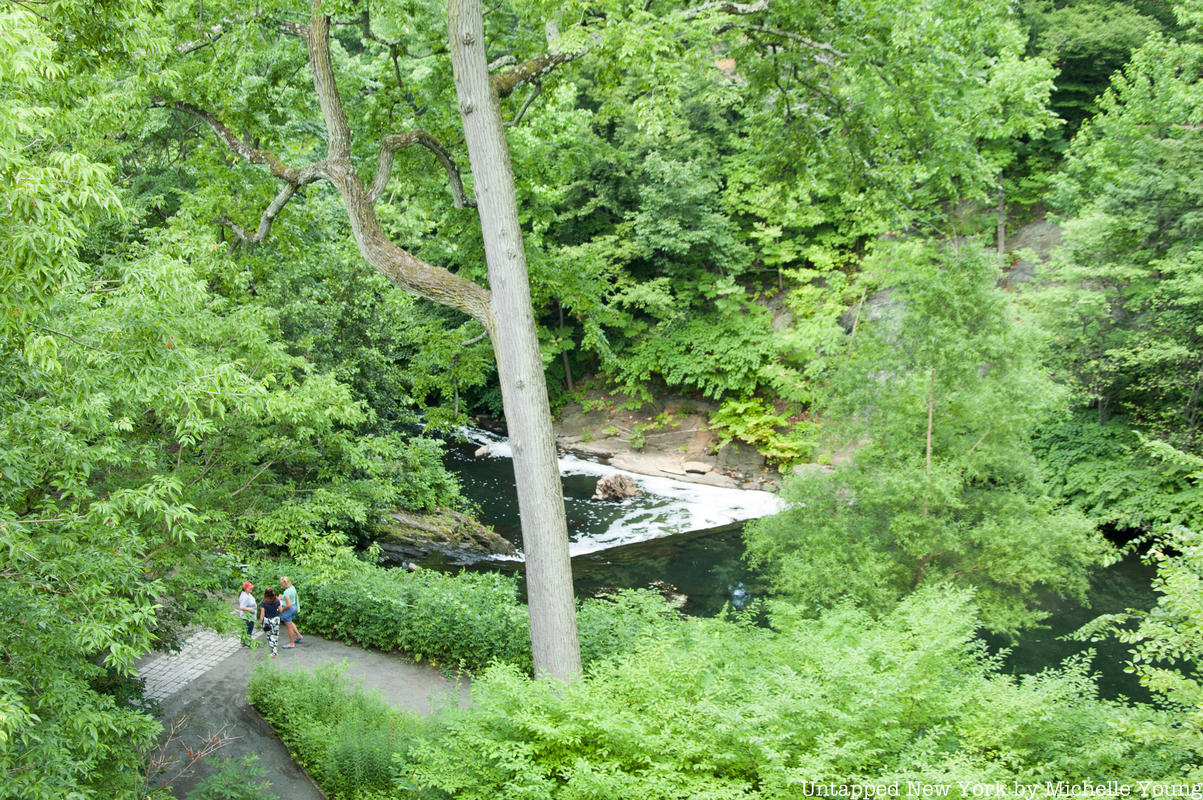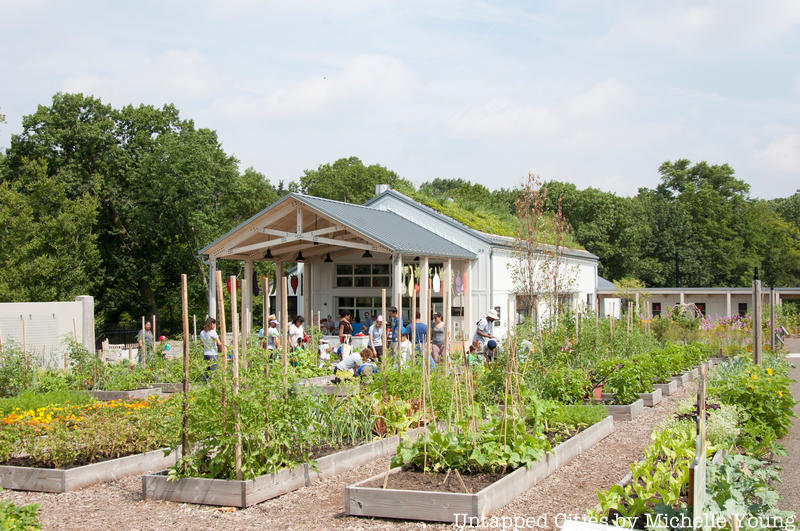At the New York Botanical Garden, the Lorillard Snuff Mill sits on a beautiful site along a curve of the Bronx River, nearby what was once the family mansion of the Lorillard family. The French Huguenot family, who settled originally in Lower Manhattan, made their fortune in snuff from tobacco in the Colonial period and began purchasing properties along the Bronx River in the late 1700s. They operated a shop on Park Row in Manhattan. You may know the Old Gold tobacco brand, which was created by the Lorillards and supposedly inspired by the treasure that allegedly went down with the HMS Hussar in the East River.

In 1792, the Lorillard brothers, sons of founder Pierre Abraham Lorillard who was killed in the American Revolution, purchased the grist mill that originally stood here along with fifty acres of land, which included various buildings and the water rights along the Bronx River. By around 1800, the Lorillards had built the new mill, which still stands today, on the site of the original grist mill to produce snuff. The mill was built of native fieldstone from the area and is, according to the Landmarks Preservation Commission, “one of the few surviving examples of the vernacular type utilitarian building which was once so common in the area.”
The Lorillards invented a new way to produce snuff, a smokeless tobacco, damming the river to increase the flow of the water which could then move large stone wheels to grind up the tobacco. The two wheels 15 inches wide were in the basement, with water flowing in from the river into the basement of the building.
 The Bronx River behind the Edible Academy leading up to the Snuff Mill
The Bronx River behind the Edible Academy leading up to the Snuff Mill
According to the Bronx River Alliance, the Lorillards were innovative not only in the method of production but in the product itself, making “the snuff more palatable by mixing it with dried, fine-ground rose petals.” These innovations made the Lorillards so successful, they were able to build a 45-room mansion nearby the mill. It burned down in 1923 and the Edible Academy at the New York Botanical Garden is now on the site of the former mansion, across from the Peggy Rockefeller Rose Garden where the Lorillards once grew their roses.
 The Edible Academy, on the site of the former Lorillard Mansion
The Edible Academy, on the site of the former Lorillard Mansion
The mill operated for about 70 years until the Lorillards moved production to a factory in New Jersey. In 1884, the New York City Parks Department purchased 661 acres of the Lorillard’s estate in the Bronx and used the mill as a carpentry shop, retaining the water mill and machinery of the mill until around 1900. In 1915, the Parks Department transferred 140 acres of the Lorillard property to the New York Botanic Garden.
In the 1940s, the Snuff Mill Team Room operated out of the mill and a back terrace that was constructed. The snuff mill was declared a New York City landmark in 1966 and listed on the National Register of Historic Places in 1977. The Landmarks Preservation Commission notes the quality of the building, stating “the fieldstone and brick masonry trim is of excellent quality and a very fine example of Nineteenth Century construction. In the restoration the original structure was restored and changed as little as possible. The century old beams were left exposed, showing where the machinery for the grinding stones had been attached.” What the Commission refers to are roman numerals that still remain that show how timber beams were attached together, along with a hoist that would have powered a hand-pulled elevator.

In 2009, the Lorillard Snuff Mill underwent a $10.5 million restoration. By the accounts, the building was in need of urgent restoration. Gregory Long, the President of the New York Botanical Garden at the time, said to the New York Times, “It has been our policy not to go ahead with projects that are not fully funded. But the snuff mill is in such bad shape that it was a question of stewardship. Plus, it’s revenue-producing.” The efforts included new cedar shingles on the roof, adding storm windows behind the historical paned windows, restoration of the exterior walls, and the construction of a new kitchen, bathrooms, and elevator. Today, the building renamed the Lillian and Amy Goldman Stone Mill, is used for events like weddings, and contains offices for the horticultural staff.
In 2015, the New York Botanical Garden was surprised by a visitor who put two and two together, realizing that a jar in the family collection contained tobacco that was milled at the Lorillard Snuff Mill. She presented the jar to The LuEsther T. Mertz Library at the Botanical Garden along with “commemorative catalogs from the Lorillard Tobacco Company and a newspaper article dated December 31, 1893, discussing the award winners at the World’s Fair held in Chicago that year.” In fact, the Lorillards had won first prize at the World’s Fair for their exhibit, which included the jar of snuff.
Next, check out the Top 10 Secrets of the New York Botanical Garden.






